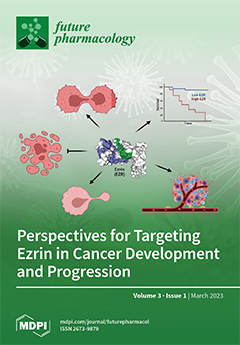Some pharmaceutical excipients are able to modify intestinal permeability, thus influencing drug absorption and bioavailability. The effect of four polyols (mannitol, maltitol, sorbitol and xylitol) on the permeability of seven active pharmaceutical ingredients (API), representing different BCS classes (furosemide, amiloride, atenolol, ranitidine, nadolol,
[...] Read more.
Some pharmaceutical excipients are able to modify intestinal permeability, thus influencing drug absorption and bioavailability. The effect of four polyols (mannitol, maltitol, sorbitol and xylitol) on the permeability of seven active pharmaceutical ingredients (API), representing different BCS classes (furosemide, amiloride, atenolol, ranitidine, nadolol, L-thyroxine and acyclovir), was investigated using the Caco-2 cell permeability model. Analytical methods for the sensitive polyol and API quantification were developed using Ultra High Performance Liquid Chromatography coupled to triple-quadrupole Mass Spectrometry (UHPLC-QqQ). Apparent permeability coefficients (
Papp) were calculated from the measured concentrations in the apical and basolateral compartments. The cell monolayer remained intact throughout the experiment in all trials, neither significant Lucifer Yellow (LY) passage, nor modification of the electrical resistance was detected, demonstrating that no active principle or excipient (or combinations thereof) modulated the paracellular transport. The
Papp values for apical to basolateral and basolateral to apical directions of drug + excipient combinations were compared with the
Papp values for the drug substance alone. Our results show that mannitol, maltitol, sorbitol and xylitol did not modify the permeability of furosemide, amiloride, atenolol, ranitidine, nadolol, acyclovir and L-thyroxine APIs. Moreover, the presence of polyols did not alter the efflux of the active principle (basolateral to apical).
Full article




